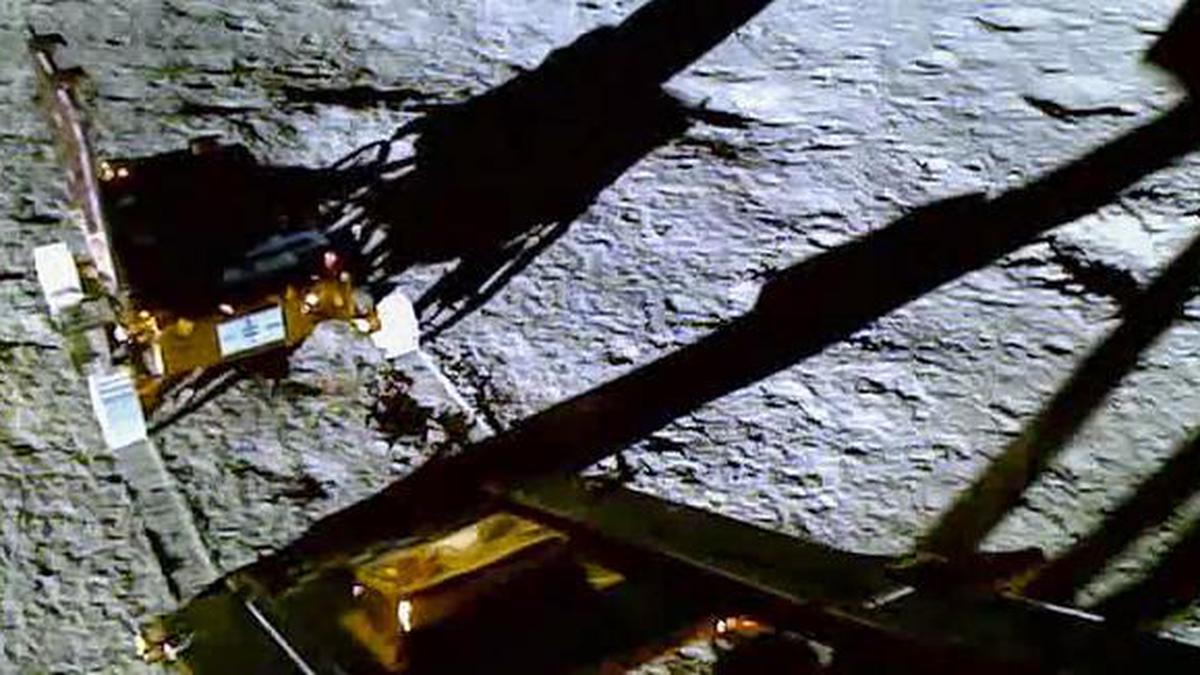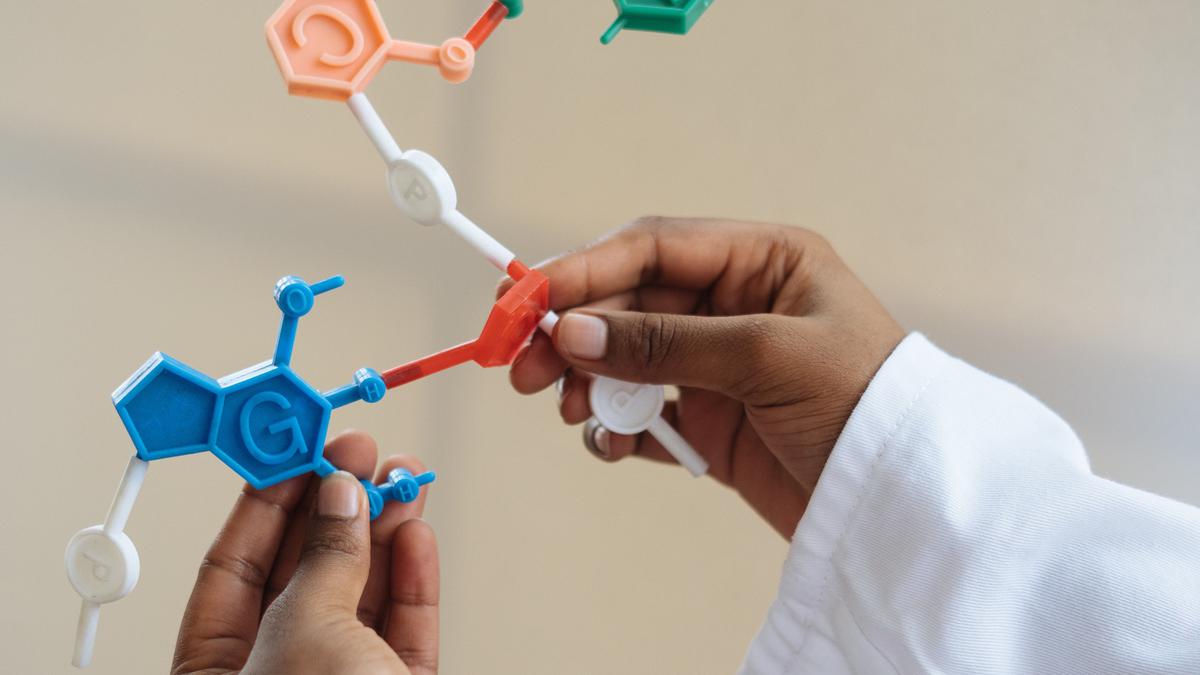A long night awaited the Pragyan rover on the moon as it bid farewell to operators at the Indian Space Research Organisation (ISRO) one last time. The subzero temperatures proved too low for the suitcase-sized rover. Fourteen days after landing on the moon as part of India’s historic Chandrayaan-3 mission, the rover went to sleep forever.
But in this window, the machine had already met all of ISRO’s expectations and completed its scientific goals. It had spent two weeks studying the lunar soil and relayed valuable scientific data back to the earth in anticipation of a slew of discoveries — from recording the presence of sulphur to confirming the presence of certain small rock fragments around crater rims near Shiv Shakti point, the place where the Chandrayaan-3 lander descended.
Today the Chandrayaan-3 team may have reported its most significant finding thus far, one that sheds light on the moon’s origins.
In a study published in the journal Nature on August 21, the research team has reported finding the presence of a rock type called ferroan anorthosite in the lunar soil. The sighting is important because it confirms what the U.S. Apollo missions and the erstwhile Soviet Union’s Luna missions saw from the lunar equator in the 1960s; Pragyan operated in the lunar south pole region. The consensus among scientists is that these anorthosite rocks could be the remains of an ancient ocean of magma that blanketed the moon’s surface some four billion years ago. Data from Pragyan builds support for this idea.
The moon’s origins
“Ferroan anorthosite rocks are very common on the earth,” Santosh Vadawale, the principal investigator of Pragyan’s Alpha Particle X-ray Spectrometer (APXS) instrument and the first author of the study, told this reporter. In fact, the earth contributed all the anorthosite found on the moon today.
As the consensus goes, the moon was born from the remains of a headlong collision between the early earth and some rogue planetary body aeons ago. The moon’s rocky surface was initially molten. The minerals in there slowly crystallised as the lava cooled to form rocks of various kinds, including ferroan anorthosite.
Meteorites raining down on the moon beat these rocks down to fine dust over many centuries. Similar weathering phenomena occur on the earth but the moon has a very thin atmosphere and lacks volcanic activity, so all meteors reach the surface and the surface isn’t replenished with new rocks over time.
The Vikram lander onboard the Chandrayaan-3 mission landed on the moon just past 6 pm IST on August 23, 2023. The Pragyan rover rolled out a few hours later and gingerly moved about 100 metres from Vikram over the next two weeks. The slow pace was to make sure Pragyan didn’t stumble over any stray rocks or ridges, jeopardising the high-stakes mission.
During its journey, the rover occasionally stopped to observe moon dust with its instruments — from some 23 locations around Statio Shiv Shakti. Its APXS instrument, mounted close to the rover’s navigation cameras, affirmed the dust’s chemical and mineral composition by firing X-rays and alpha particles at it produced from a radioactive mass of curium.
Pragyan also stopped for a few minutes to around two hours to scan the soil. This is because the dust particles often deflected the alpha particles in some direction away from the APXS detector. Its stops allowed the detector to collect enough readings.
In these readings, Dr. Vadawale & co. identified evidence of ferroan anorthosite as well as debris from another ancient relic strewn on Pragyan’s path.
Deciphering the dust
Vikram’s landing spot, Statio Shiv Shakti, is about 300 km from the largest impact crater in the solar system: the South Pole-Aitken Basin. It’s around 8 km deep and 2,500 km wide. Scientists have theorised that a powerful meteor strike created the depression, excavating material from deep inside the moon — perhaps from the upper mantle — and splashing it around the surface, probably all the way up to Statio Shiv Shakti.
Subsequent meteor strikes on the moon created a pretty uniform mixture of this magnesium-rich content and the anorthosite dust. Dr. Vadawale said he was relieved when the team found Pragyan’s data affirmed the unusually high magnesium content.
“What we are finding matches very nicely in terms of the prediction of a magma ocean, plus the impact theory,” he said.
Such a feat wouldn’t have been possible with a typical orbiter mission. Orbiters can only identify elements in the soil, not their abundance. A closer look also helps elicit details that an orbiter might miss simply because a certain part of the surface isn’t lit by the Sun. “You don’t have full control over it in a typical orbital scenario.”
“That is why it’s important to have actually landed on a surface and [conducted] a very close analysis there.”
He also said Pragyan established “ground truths” around the lunar south pole that could be ascertained with data already collected by instruments from the past, including during the Chandrayaan-1 and Chandrayaan-2 missions. This requires some daunting data tuning that, Dr. Vadawale said, has already begun. “All our teams are already working on it, and then we will continue with that, and will get those right.”
While the rover itself has signed off, the data from its APXS and LIBS instruments live on and could lead to more science. “We do expect to get some science from APXS data itself. I mean, there are still some aspects of it which … teams are working on,” Dr. Vadawale said. “For example, the present paper is based on the overall bulk composition and all the major elements, but we do have observations of many minor elementsand their concentrations. The changes in their concentration [from] what is expected also holds a certain key, so those aspects are still being worked on.”
In general, he added, the data from the rover’s payloads as well as from instruments fit to the lander and the orbiter “hold up good progress. And I think … the string of the results will continue in future.”
After the August 23 feat last year, Prime Minister Narendra Modi designated the date India’s new ‘National Space Day’. According to Dr. Vadawale, the paper’s publication just ahead of its first commemoration isn’t a “surprise”. He said he had suggested to Nature’s editorial team that the paper be published before Vikram Sarabhai’s birth anniversary on August 12.
Dr. Vadawale is with the Physical Research Laboratory (PRL), Ahmedabad. His coauthors include his colleagues at PRL as well as the U.R. Rao Satellite Centre in Bengaluru and the ISRO Space Applications Centre in Ahmedabad.
Karthik Vinod is a freelance science journalist and co-founder of Ed Publica. He has masters’ degrees in astrophysics and science, technology and society.












